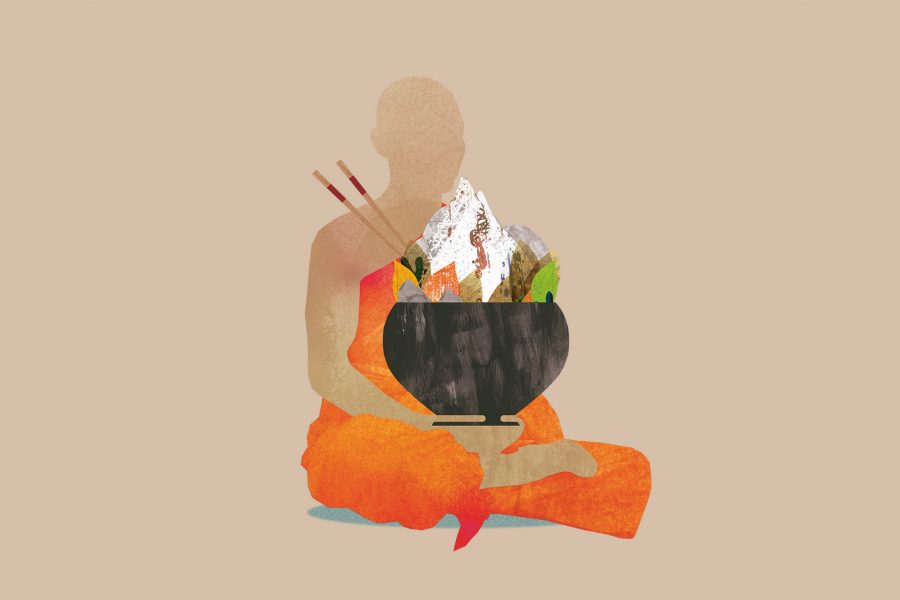The practice of giving food to buddhist monks

The novice knew he wasn’t supposed to be hankering for food other than what the faithful brought to the temple in Bangkok. But there he was, sitting up straight, doing his best to behave like a monk, asking his mum if she remembered the restaurant they’d gone to before he’d donned these holy robes.
I overheard the question and had to stifle a laugh. The boy, doing his dharma duty on his summer break, was no older than 10, and he knew he wasn’t supposed to complain.
But the youngsters don’t have to put in special menu requests. They’ve all got the best mothers in the world, and the mums know exactly what they have to cook or buy the next morning before coming to the temple.
Mothers have been cooking food for monks and giving alms, as the practice of offering food is called, since the dawn of Buddhism over 2,500 years ago. Specifically, almsgiving is a tradition of Theravada Buddhists, who are an overwhelming majority in Thailand, Cambodia, Myanmar, Sri Lanka and Laos. By bringing monks food each day, the faithful are investing in the faith, and in doing so they too make merit to nourish their own souls.
I remember how my siblings and I would drool watching our mother prepare dishes late in the evenings, as if the family were preparing for a feast. The food was of course for the monks, and we felt envy the next morning when the men in saffron robes would pause outside our house during their rounds and receive those dishes.
Indeed, it was always the best food from our kitchen, as it was intended not just to sustain the monks but also to demonstrate the giver’s selflessness and commitment to the faith. It is the worldly duty of the layman, as a way to maintain a direct connection with the Lord Buddha. It is especially meaningful for laywomen, as they cannot legally be ordained in Thailand.
Times have changed and so have lifestyles. Fewer people now devote the effort in the kitchen to preparing food for monks. It’s much more convenient and equally meritorious to buy neatly wrapped dishes as offerings.
These days, Buddhists also see the practice as a way of connecting to their ancestors through the monks. They give their own favourite dishes or those that their late parents or grandparents loved, in the hopes that these individuals would be enjoying them in the afterlife.
- China – the Chinese Mainland, Hong Kong SAR, Macao SAR and Taiwan Region
- Hong Kong SAR - English
- Chinese Mainland (China) - English
- Taiwan, China - English
- 香港特別行政區 - 繁體中文
- 中国內地 - 简体中文
- 中國台灣 - 繁體中文
- Africa
- South Africa - English
- Asia
- Bangladesh - English
- Korea - English
- Singapore - English
- Cambodia - English
- 한국 - 한국어
- Sri Lanka - English
- India - English
- Malaysia - English
- Thailand - English
- Indonesia - English
- Maldives - English
- ประเทศไทย - ภาษาไทย
- Indonesia - Bahasa Indonesia
- Myanmar - English
- Vietnam - English
- Japan - English
- Nepal - English
- Việt Nam - tiếng Việt
- 日本 - 日本語
- Philippines - English
- Australasia
- Australia - English
- New Zealand - English
- Europe
- Belgium - English
- France - Français
- Россия - Русский
- Denmark - English
- Ireland - English
- Schweiz - Deutsch
- Deutschland - Deutsch
- Italia - Italiano
- United Kingdom - English
- España - Español
- Nederland - Nederlands
- Middle East
- Bahrain - English
- Saudi Arabia - English
- United Arab Emirates and Qatar - English
- Israel - English